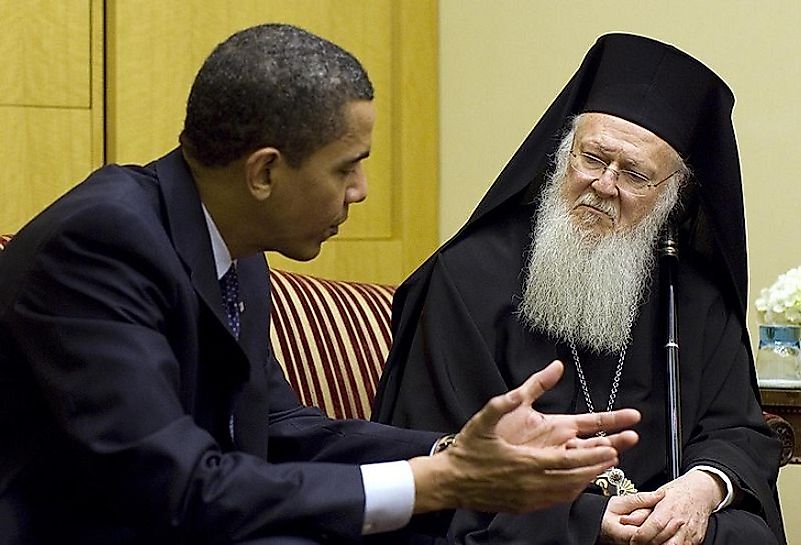The Eastern Orthodox Christian Church

Background and Initial Formation
The Eastern Orthodox Christian church was the result of the East-West Schism, also known as the Great Schism that divided the Christian world into the Eastern Orthodox and Catholic Church centered in Rome. Ecclesiastical disputes and theological differences between Greek East and Latin West existed throughout the first millennium, but the formal break came in 1054 when the Eastern Church rejected the Pope’s universal authority. The Orthodox Church was heir to the pre-schism churches that had been established by the Apostles. After the schism, Eastern Orthodoxy spread throughout the eastern Roman and later Byzantine Empires and beyond. The Eastern Orthodox Church is not a hegemonic institution but a family of 13 self-governing churches characterized by the individual countries from which they operate, for example the Greek Orthodox church and the Russian Orthodox church headed by the Patriarch of Constantinople.
Beliefs, Doctrines, and Sacred Texts
Adherents of the Eastern Orthodox doctrine practice what they consider the original faith as given by the Apostles. Like Catholics and Protestants, they affirm the Trinity and Bible as the word of God and Jesus as the son of God. However, the Old Testament of the Orthodox Bible is not based on the Hebrew but an ancient Greek translation called the Septuagint. The Orthodox Church does not believe in the justification of faith, but emphases ‘divinization’, the gradual process whereby ordinary Christians become Christ-like. Other variations from the Catholic and Protestant traditions is the equal authority of scriptures and church authority, the perpetual virginity of Mary, baptism of babies without context of individual responsibility and the specter of losing salvation.
Important Calendar Dates
After World War I, Orthodox Churches abandoned the Julian calendar and adopted a form of the Gregorian calendar, which begins on September 1 and ends on August 31 and every day is a saint’s day. Apart from Russia, Jerusalem, Serbia and Mt. Athos all Orthodox churches use the Gregorian calendar for holy days and fixed feasts and the Julian calendar for movable feasts and Easter. Since the Gregorian almanac is 13 days ahead of the Julian, Orthodox Christians celebrate Christmas on the 7th of January. Eastern Christmas, however, lacks the commercial aspect typical of the West. Eastern Christmas is also preceded by a 40-day fast beginning on November 15. Christmas is the foremost religious festival of Catholics and Protestants but Easter ranks supreme for Orthodox Christians.
Global Distribution
Today, the number of Eastern Orthodox Christians in the world is estimated to be between 225 and 300 million. Roughly half this number lives in Russia, which constitutes the country’s single largest religion. In Ukraine, it is a majority religion, which comprises 66% of its population. Almost all of Greece is Eastern Orthodox with adherents comprising 95% to 98% of its population. Other countries with a significant percentage of Orthodox Christians are most of the countries that were a part of the erstwhile U.S.S.R. and other Eastern European countries. In Turkey, their number reduced drastically after the Armenian genocide and the transfer of populations between Greece and Turkey in 1923.
Eastern Orthodoxy Today
Today, the Eastern Orthodox Church remains one of the most influential religious organization on the planet. Eastern Orthodoxy is the second largest centralized Christian school of thought, behind only Catholicism. The impact of Communism throughout much of Europe in the 20th Century with the rise of the Soviet Union and Eastern Bloc saw a rise in secularism and atheism, and concomitantly a consequent decline of the church's influence in many places. Nonetheless, the church has seen a bit of resurgence since the fall of many of Europe's single-party Communist states in the early 1990s.











